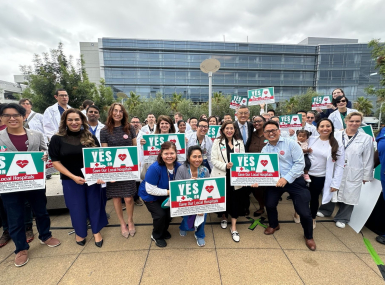HRSA offers funds to aid care transitions for justice-involved individuals
Author

Blaire Bryant

Naomi Freel
Upcoming Events
Related News

Key Takeaways
On April 10, the U.S. Department of Health and Human Services’ Health Resources and Services Administration (HRSA) announced the availability of $51 million in funding opportunities open to HRSA-funded health centers. HRSA-funded health centers, which serve over 30 million patients, play a crucial role in county healthcare systems emphasizing equity and accessibility in healthcare. This new initiative focuses on supporting individuals leaving incarceration by providing health services during the critical 90 days before release, assisting justice-impacted individuals with their return to the community by expanding access to primary healthcare—including mental health and substance use disorder treatment.
Impact on counties
County governments operate 2,875 of our nation’s 3,160 local jails, admitting approximately 11 million individuals across the United States each year. Many of these individuals have mental health or substance use issues, with serious mental illnesses being three to four times more prevalent among jail inmates than the general population. America’s local jail population includes an estimated 40 percent of people with a serious chronic health condition, 44 percent with a major mental health illness and 63 percent with a substance use disorder.
Leveraging community health centers to deliver health services to incarcerated individuals for 90 days before their release will benefit both counties and their residents in the following ways:
- Individuals impacted by the justice system will experience better continuity of care and improved health outcomes as they reintegrate into the community.
- Successful reintegration of justice involved individuals into the community will reduce rates of jail recidivism attributable to untreated substance use disorder and mental illness.
- Improved care continuity for justice involved individuals reduces emergency room and hospital utilization rates for this population, which alleviates associated cost burdens on the county.
Funding guidelines
- Health Center Program award recipients are invited to apply for this grant to execute innovative approaches to supporting transitions in care for people leaving incarceration.
- Funding should be used to implement strategies to address the risk of drug overdose, treatment for mental health and substance use disorder, management of chronic conditions and prevention, identification and treatment of infectious diseases.
- Funding can be used to provide case management services addressing social determinants of health.
- This application is currently open to eligible Health Center Program award recipients. There are expected to be approximately 51 recipients with a maximum individual award of $1,000,000.
Applications are due through Grants.gov on June 10, and through HRSA Electronic Handbooks on July 2.
Related News

CMS issues new guidance on Medicaid Community Engagement Requirements
On December 8, the Centers for Medicare & Medicaid Services (CMS) released a Medicaid and CHIP Services Informational Bulletin (CIB) directing states on how to implement the Medicaid community engagement requirements enacted under Section 71119 of the One Big Beautiful Bill Act legislation (Public Law 119-21), or H.R. 1.

California county sales tax measure backfills federal healthcare cuts
Santa Clara County, Calif. will raise an estimated $330 million each year from a sales tax to backfill lose Medicaid funding.
